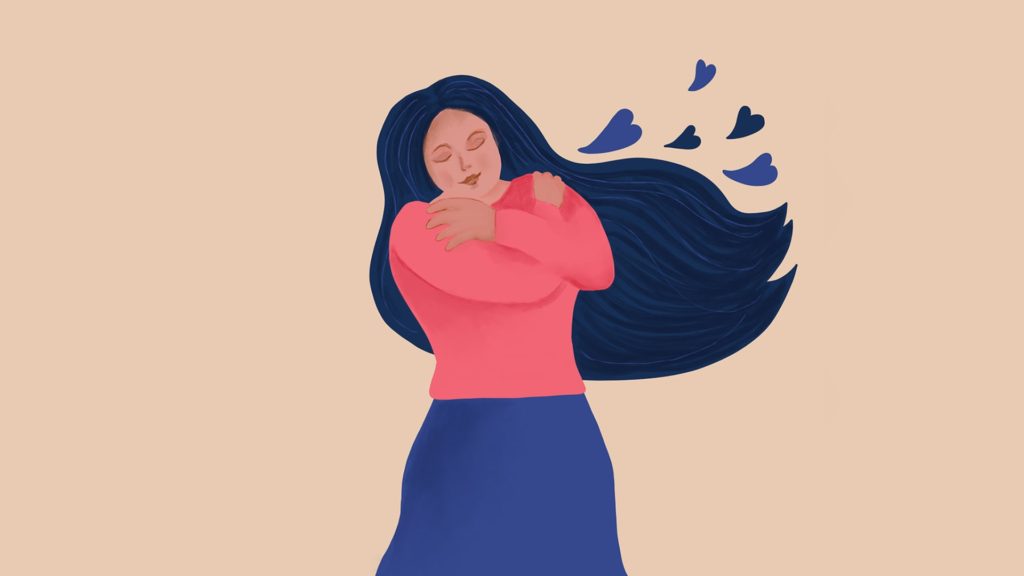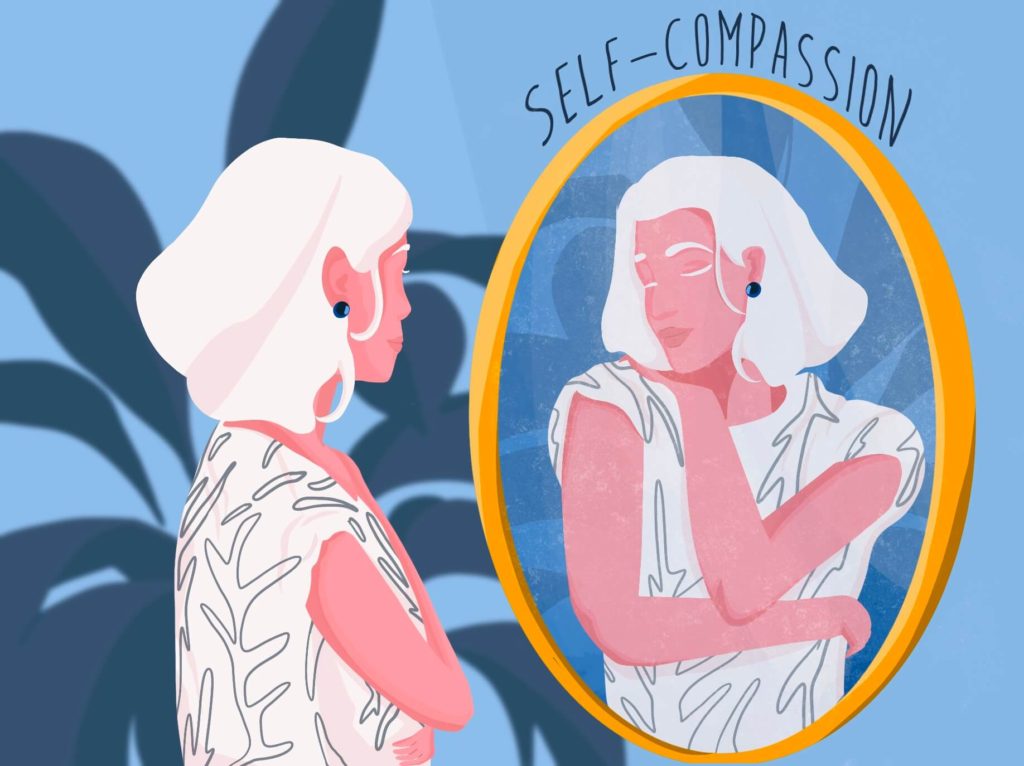In the quest to find some answers, and heal the soul in the hurting, frightening turbulence in the journey we call life, an important aspect of the healing process presented itself in one of many therapy sessions. Self-compassion. A kind of obvious word for a fairly new technique to help us through tough times. So what is self-compassion exactly? And what are the elements of it that help both understand it and practice it? Trying to answer these questions, relying on Dr. Kristin Neff’s work, specifically her website Self-Compassion.
Self-Compassion

Let’s start with the second part of the word, Compassion which linguistically means “suffer with”. It is the type of feeling for others who are in any sort of distress that results in some type of help whether it be a solid materialistic type of help or just a solid shoulder to cry on, compassion is almost the next step after pity, the stepping down from a proverbial pedestal to reach a hand for another human. “compassion involves feeling moved by others’ suffering so that your heart responds to their pain”
Adding Self in, simply means that a person can take all the compassion for others facing tough times, and apply it to themselves. To notice that self-loathing and beating down when tough times are ahead, or a failure happens, and instead slow down and feel for one’s self.
“Self-compassion involves acting the same way towards yourself, you stop to tell yourself “this is really difficult right now,” how can I comfort and care for myself at this moment?”
A simple yet very effective way to manage through negative feelings and perfectionism tendencies.
The Three Elements
Dr. Neff presents three key elements to self-compassion on her official website:-
1- Self-kindness vs. Self-judgment
This one has to do with the outside world, more specifically our reality, because once we accept that reality is a sea of constant waves of emotions and events that go up and down, and that not every wave will come as we desire it to be, then self-compassion is approachable.
“People cannot always be or get exactly what they want. When this reality is denied or fought against suffering increases, but when this reality is accepted with sympathy and kindness, greater emotional equanimity is experienced.”
2- Common humanity vs. Isolation.
This is about our inner selves, deep down when stress comes, sometimes some of us tend to isolate, not just physically, but also mentally, thinking that whatever suffering we’re facing at a certain moment is happing only to us, like no other human has ever dealt with something like this, or felt as bad as this, while in fact, the reality is the complete opposite of that. “self-compassion involves recognizing that suffering and personal inadequacy is part of the shared human experience – something that we all go through rather than being something that happens to “me” alone.”
3- Mindfulness vs. Over-identification.
Another human tendency that is differently avoidable once the full realization and intent of self-compassion sets in, we are all guilty of over-identifying or dwelling on a specific problem we’re facing or a feeling. But a pause for self-reflecting and trying to be reasonable within our minds and how we feel our feelings is key to avoiding that. “We cannot ignore our pain and feel compassion for it at the same time. At the same time, mindfulness requires that we not be “over-identified” with thoughts and feelings, so that we are caught up and swept away by negative reactivity.”
Tips to Practice

Practicing self-compassion might sound fairly easy, but beware of the signs that might occur during the start of the practice, slowly yet definitely surly, through these simple tips and continuous practicing self-compassion will come as an after-thought, an everyday response to everyday life.
First, notice that Self-Compassion is not eternal happiness, again the realization that life is nothing but ups and downs and a person does what he can to an extent until they leave it up to the flow of reality. “After all, even though the friendly, supportive stance of self-compassion is aimed at the alleviation of suffering, we can’t always control the way things are. If we use self-compassion practice to try to make our pain go away by suppressing it or fighting against it, things will likely just get worse.”
Secondly, notice that self-hate makes room for self-love, nothing is more suitable to describe this than the saying on the website “Love reveals everything unlike itself.” it is basically the way the pain increases once we start the practice of self-compassion, which a perfectly normal thing, “We call this phenomena backdraft, a firefighting term that describes what happens when a door in a burning house is opened – oxygen goes in and flames rush out.”
Thirdly and most importantly, notice the need for a step back and mundane self-care acts. It is a must to know when to stop the practice and take it easy with simple ordinary actions like snacking on something healthy or pampering one’s self. Until it feels right to start again slowly while taking care not to irritate past emotional feelings cramped up in our minds. “And if we ever feel overwhelmed by difficult emotions, the most self-compassionate response may be to pull back temporarily giving ourselves what we need at the moment, planting seeds that will eventually blossom and grow.”




